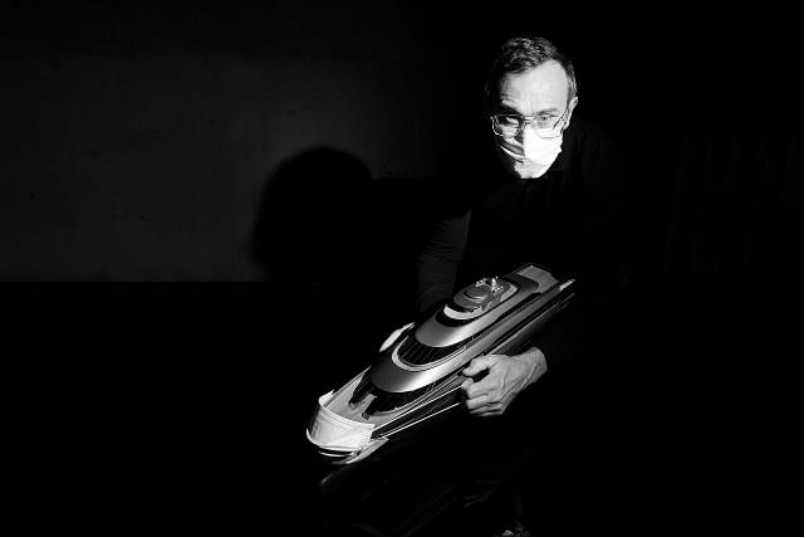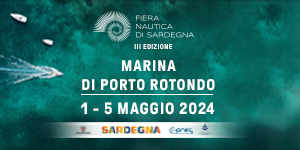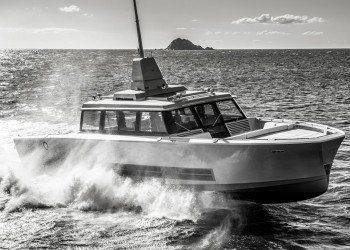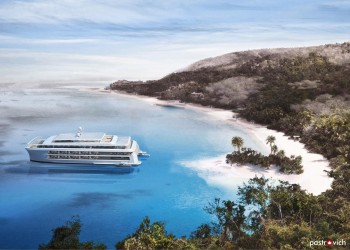
Stefano Pastrovich
Stefano Pastrovich: the ship as safe haven & the cruises of the future
How will the cruise market evolve in the age of COVID-19? Naval architect and designer Stefano Pastrovich not only has answers, but a perspective. In fact he has three: for the short, medium and long term.
The COVID-19 crisis will be a watershed for the cruise and megayacht industries. It's not just the ships that will have to change, but the very concept of what a cruise is itself.
The change will necessarily happen in stages, demanding short, medium and long-term perspectives and solutions.
These challenges will naturally involve the world's leading naval architects and designers. They will not only be asked to solve the problems of social distancing on board, with a view to hopefully restarting the industry, but above all be called on to envision the future - because nothing will be as it was before.
Stefano Pastrovich, a byword for innovation in naval architecture for 25 years with his inspired designs and radical ideas, sees the problem of the precautionary measures that will need to be adopted from two standpoints: communication and design.
THE SHORT AND MEDIUM TERM
"From a communication standpoint, it's not the vaccine that's going to save a cruise company but the combined effect of the containment measures taken and how they are communicated. On the design side, on the other hand, those companies showing the commitment to invest in developing their fleets for this express purpose will also be perceived as safer even in the immediate term."
What could we reasonably expect in the short term?
"The companies will need to adopt a coordinated design solution of minor changes for their existing ships that include lightweight or soft compartmentalisation into protected areas, the conversion of buffets into restaurants, the creation of small closed-off public areas using Japanese-type walls - only made using fabric so they're easier to build and install, plus branded masks for all guests in addition to everything required for constant sanitising and cleaning. All this, together with the fall in contagion forecast for July and August, will reassure customers."
Fabrics have always played an important role in Stefano Pastrovich's designs. He has often used curtains to delineate spaces with the benefits of managing and creating plays of light, forming cosy areas without adding to a yacht's weight.
He has also created tensile structures using highly technical fabrics to bring new kinds of versatile hangars to yachts.
Today, with the immense experience he has accumulated, Stefano Pastrovich understands how fabric could be a powerful tool for increasing the protection provided on ships in the same way that fabric masks limit contagion.
"For the cruise industry, I'm thinking of curtaining to divide areas, create routes and protect them. The benefits are ease of installation and light weight, not to mention recyclability. Then there's ease of removal for cleaning and reuse. And when the need for this partitioning is finally over, fabric can easily be repurposed. Last but not least, it's a more cost-effective solution than wood and plexiglass."
In the medium term, precautionary containment measures will also be implemented in ships under construction.
"Here, too, we'll see an approach of reducing the probability of contagion in tandem with communication. The changes will impact costs and delivery times but have an explosive impact on advance bookings for what will be perceived as ships that are "built ready-modified" for greater safety."
Looking to the long term, Stefano Pastrovich sees even more exciting challenges and rewards:
"When it comes to designing new ships, I believe in disseminating the proposals of a task force of designers dedicated to solving any health-related problems that might emerge in the coming years.
And I'm not just thinking about the design of different areas on board but of new ways of living the entire cruise experience."
THE LONG TERM: THE SHIP AS SAFE HAVEN
Stefano Pastrovich is a visionary and problem solver who responds to the demands of the times we live in by conceiving new scenarios.
"As much as we might hope for a cure and a vaccine, COVID-19 has launched us into a period of fear of contagion, haunted by memories of the lockdown. We need to move beyond that with a global vision of the future."
Stefano Pastrovich's vision takes the form of a design concept he calls the "Protected ship", which conceives the ship of the future as an island, a totally secure place, a safe haven.
"There's an immediate association between "island and safety", which sees the sea as a protective barrier. This took me to the idea of designing a ship where the experience is lived on board, but in a natural environment. I'm talking of an "experience" inside a protected ship sailing in the most amazing parts of the world, where guests don't need to go ashore madly in the way they do today."
But what will these ships of the future look like and what sort of people will the new cruise-goers that choose them be?
"They'll be ships for travellers seeking a tropical island or new floating city, ships for those who appreciate luxury and Mediterranean comfort or Alpine panoramas. Travellers who want to combine science with the thrill of diving in a submarine to the ocean's depths. Travellers who want to feel safe on board because they don't feel safe on land."
Pastrovich is envisioning much more than a simple new design of "ship" here. He's thinking of turning the whole idea of a cruise on its head. The ship will no longer be a simple means of transport to reach destinations and then disembark there to enjoy the beauties of the landscape. It will instead draw the best of the outside world within itself into a safe, protected world of comfort. It will become the destination. A natural paradise. A total experience.
"The Protected Ship, the ship as safe haven, is no longer an object, but itself a place designed to function and be lived from inside. A vantage point from which to fully admire the panoramas in which it immerses you. So, our new cruise-goers will no longer feel the need to go ashore, because the experience happens on board, while sailing through or reaching the most amazing places on earth."
Science fiction? In recent days the main cruise companies have been considering restarting their big ship cruises with itineraries that don't call at commercial ports but at the private islands owned by the main players. The future has already begun.
IN THE MIND OF STEFANO PASTROVICH
"We're going to have to change the way we do things". That's one of the most frequent refrains in this historic period. The cruise and yachting worlds are equally convinced of this.
"The meeting point of these thoughts and my profession is that, as an architect, what I do best is resolve social development problems by transforming them into designs".
The cruise and yachting markets could benefit immensely from such thinking, the viable contributions of experienced professionals.
But ideas can only be viable when part of a "global vision".
"For me, the global vision is the opportunity to design new ways of living on ships. It's the possibility of being receptive to human development and thus a very positive opportunity in negative times."
The global vision is to conceive a lifestyle beyond the ship, beyond the experience of the cruise of the future.
"Tomorrow it won't be me that travels to the ship, but the company that comes to take me there in total comfort and safety. Of course, I'm pushing this future vision to an extreme. If we do ever get there, it will be in gradual steps. But we've already seen this happen in music, from the vinyl LP to the CD, iPod and now smartphone, from which we can access any music in the world and history."
It's a change we'll become used to.
"Something similar happened across the world when visionary architects started designing "non-places" like shopping centres and car parks. At first it seemed absurd to drive to a non-place out of town to do the shopping. But it happened. And until a few months ago it was part of the wonderful normality that the virus has taken from us."







